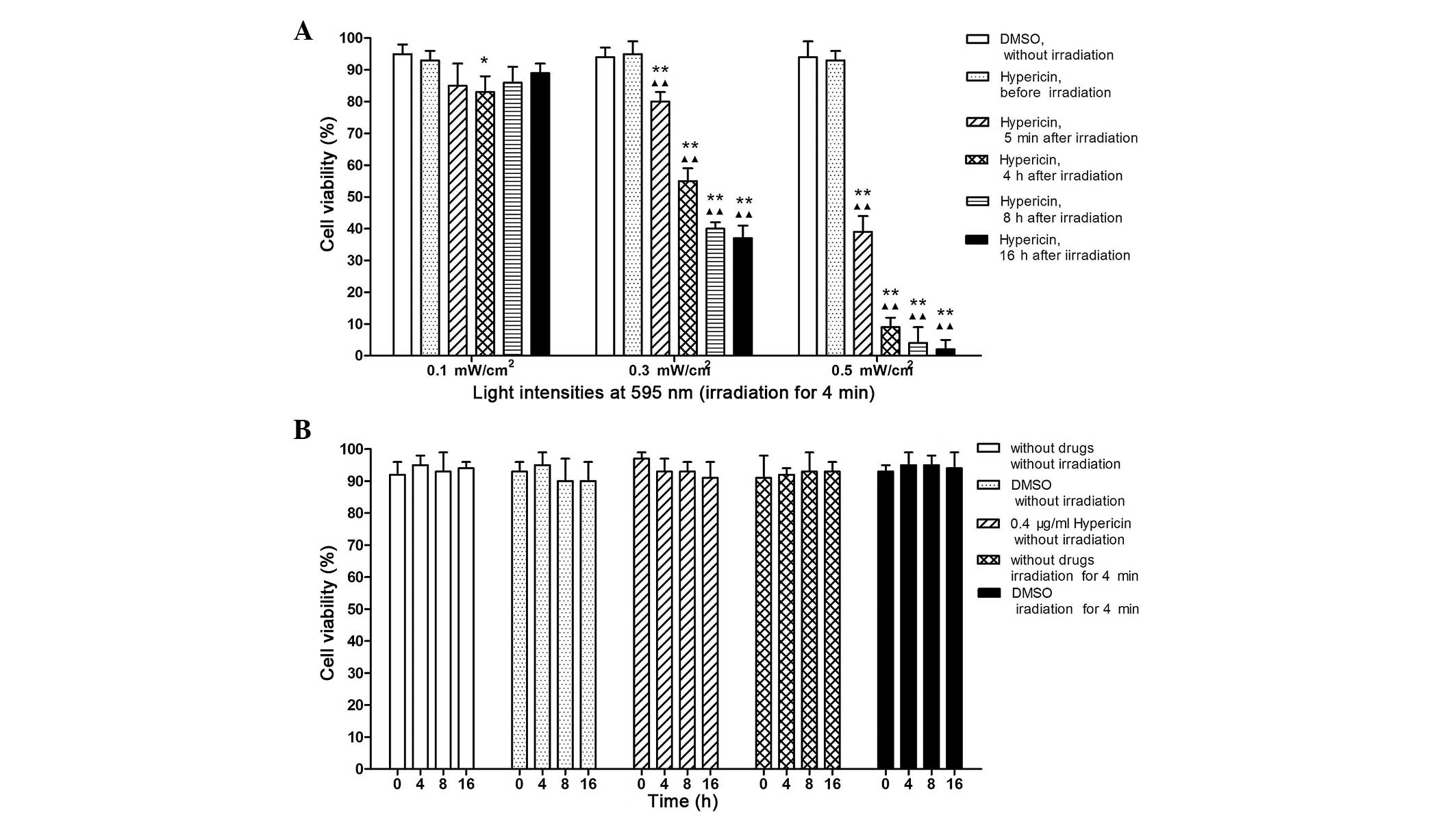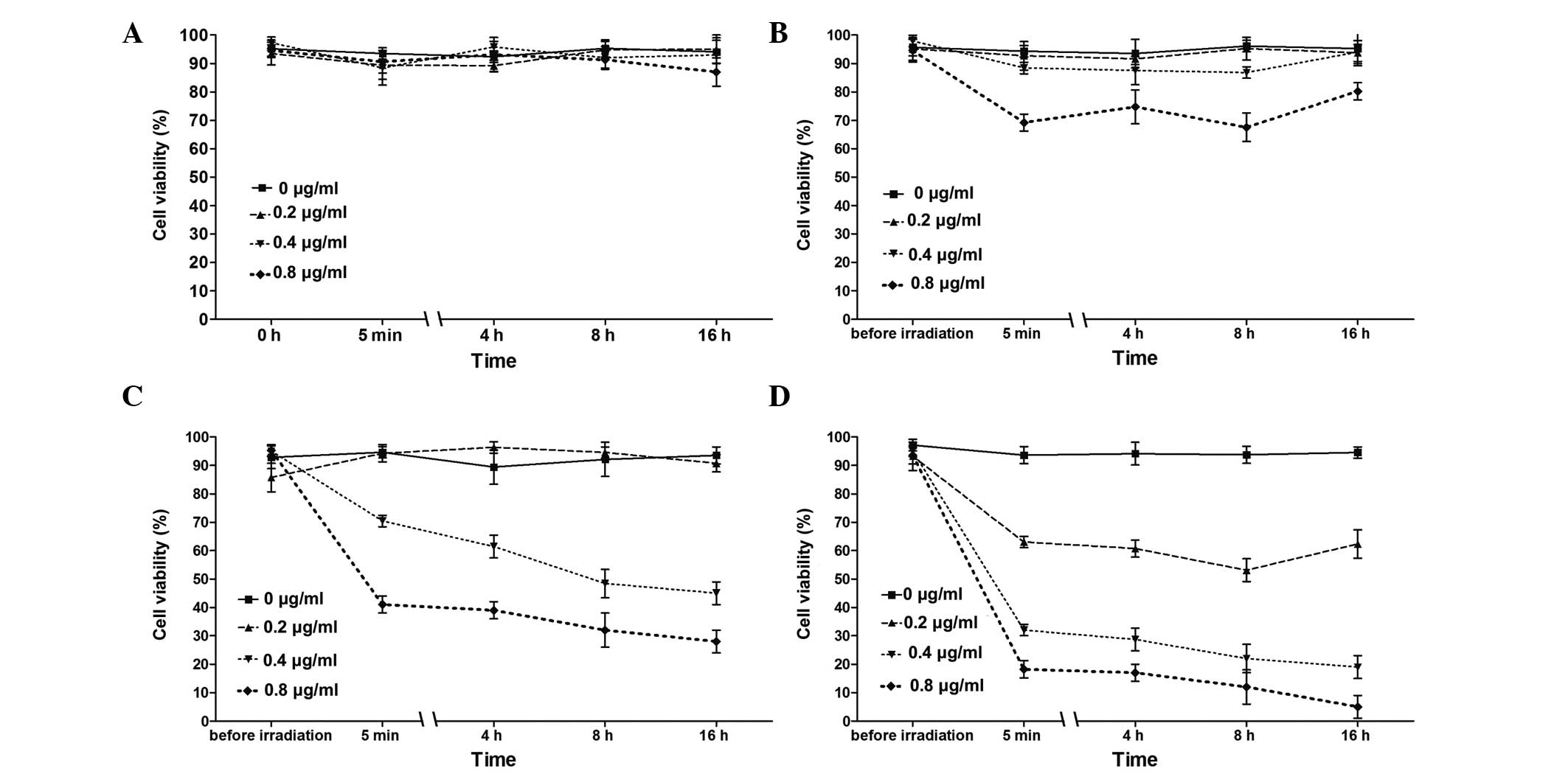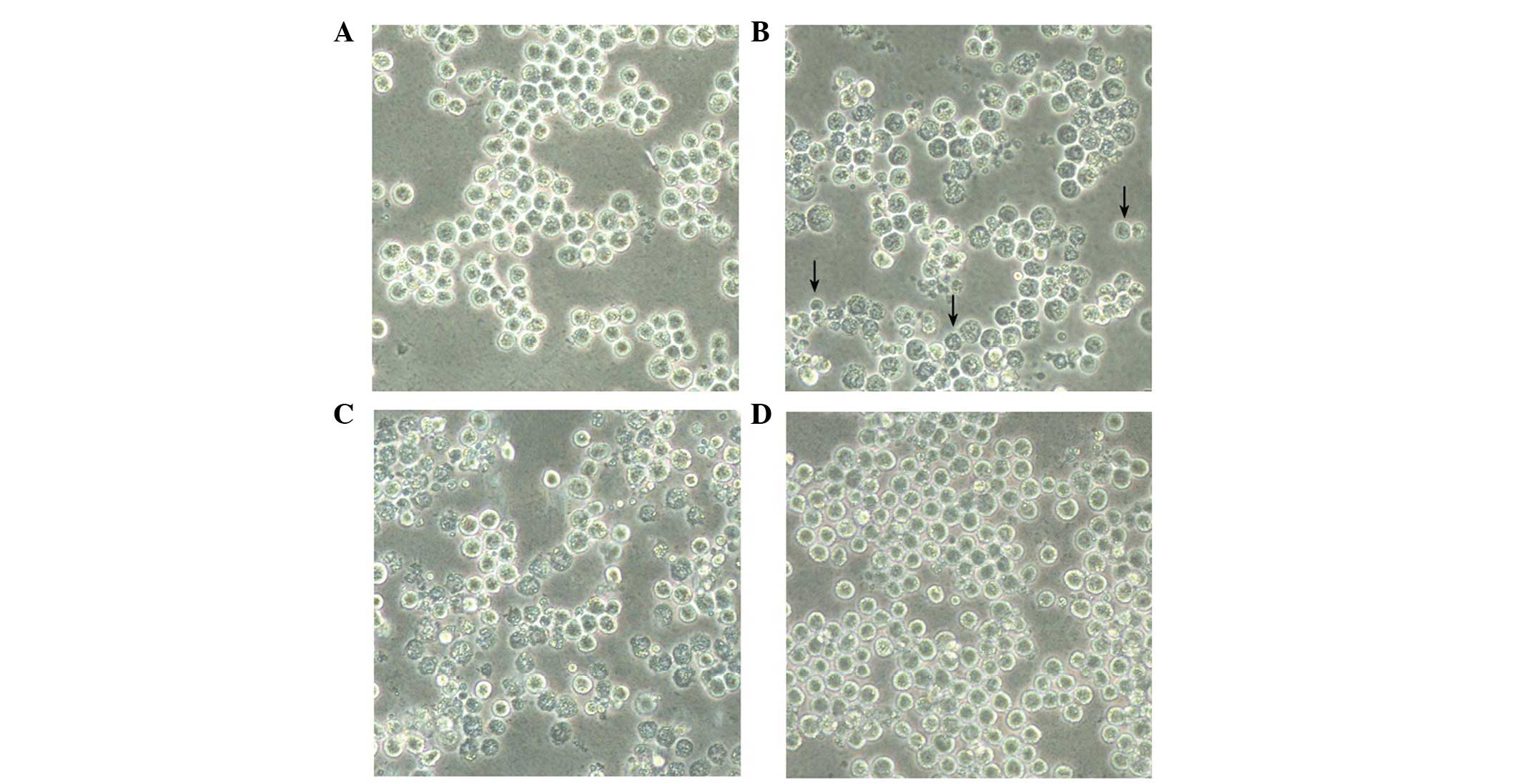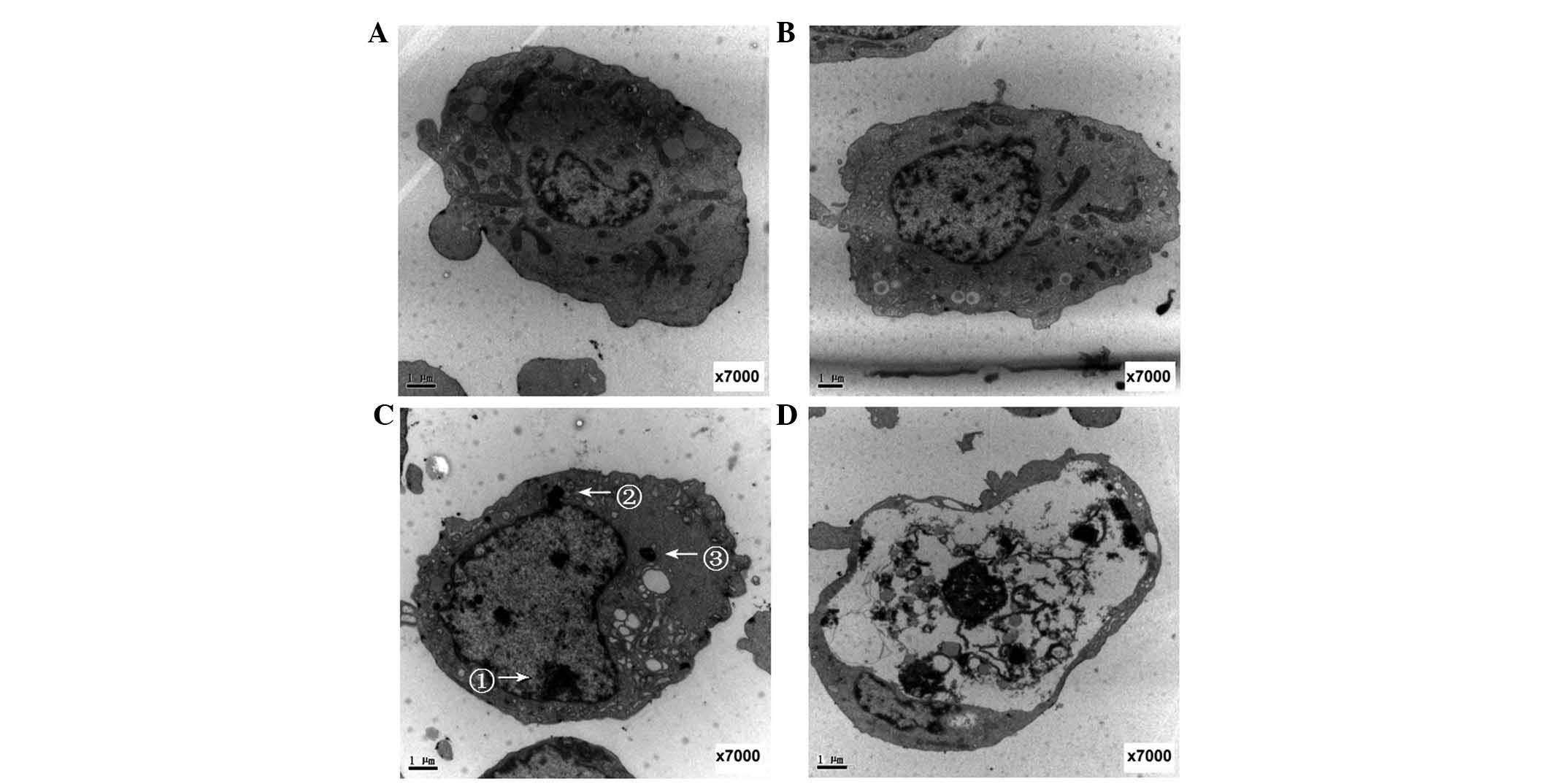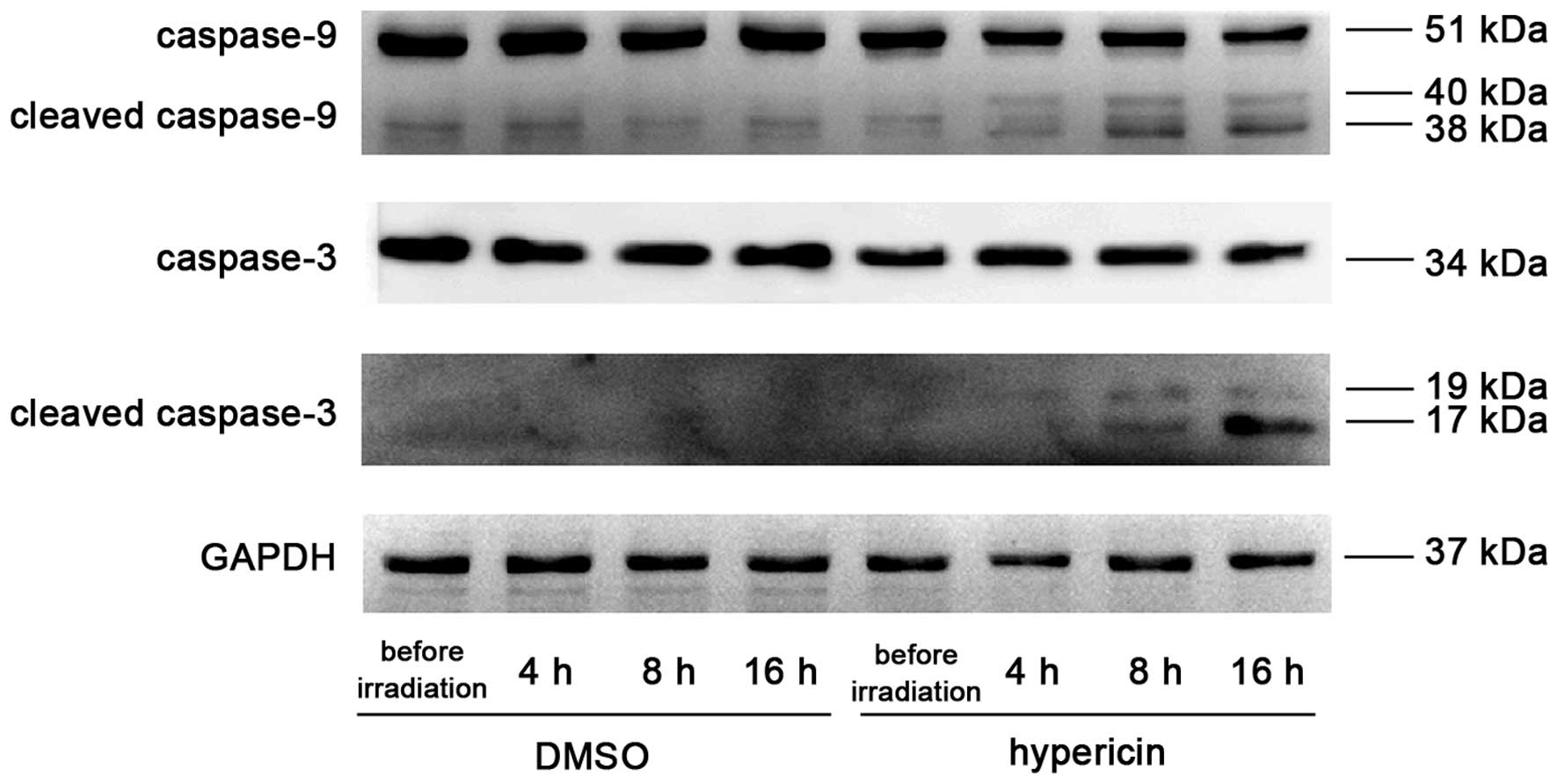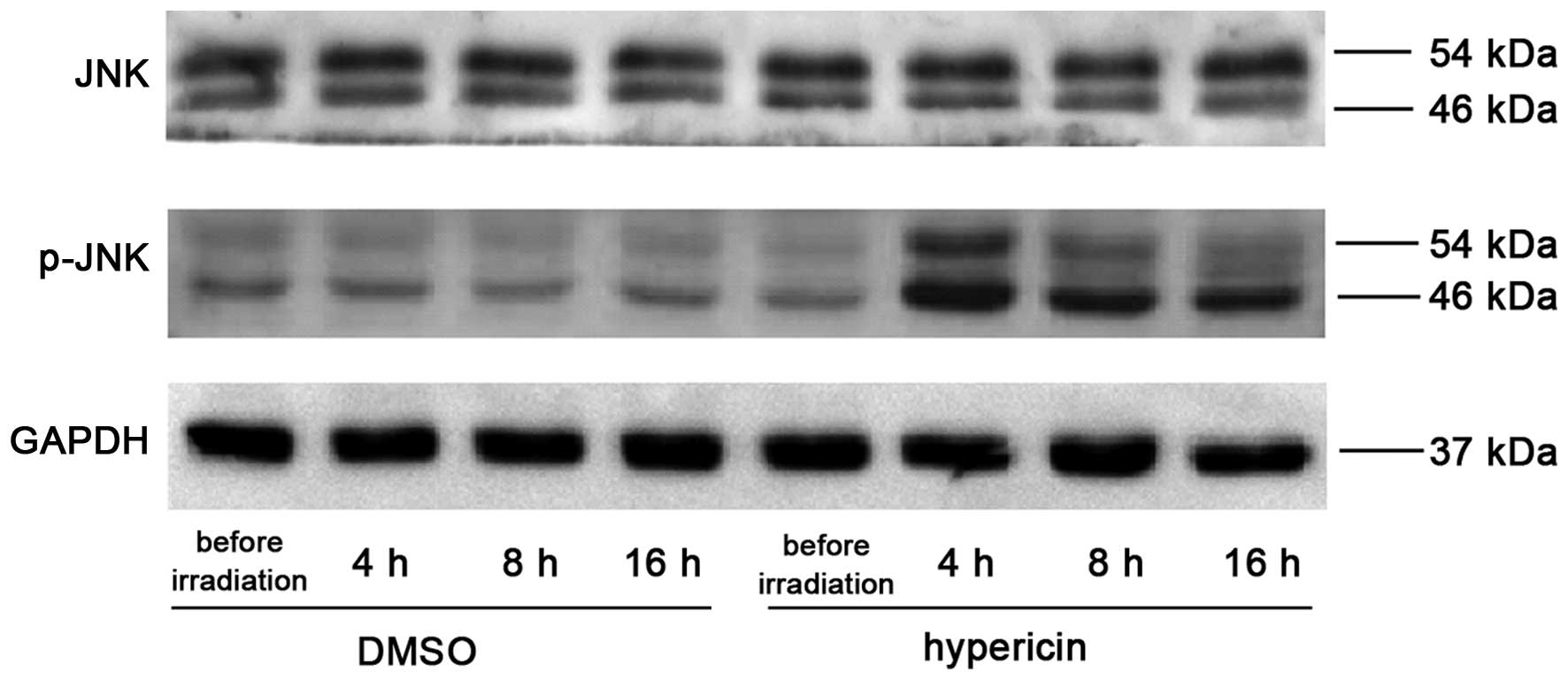|
1
|
Panzarini E, Inguscio V, Fimia GM and Dini
L: Rose Bengal acetate photodynamic therapy (RBAc-PDT) induces
exposure and release of damage-associated molecular patterns
(DAMPs) in human HeLa cells. PLoS One. 9:e1057782014. View Article : Google Scholar : PubMed/NCBI
|
|
2
|
Martirosyan AS, Vardapetyan HR, Tiratsuyan
SG and Hovhannisyan AA: Biphasic dose-response of antioxidants in
hypericin-induced photohemolysis. Photodiagnosis Photodyn Ther.
8:282–287. 2011.PubMed/NCBI
|
|
3
|
Plaetzer K, Krammer B, Berlanda J, Berr F
and Kiesslich T: Photophysics and photochemistry of photodynamic
therapy: Fundamental aspects. Lasers Med Sci. 24:259–268. 2009.
View Article : Google Scholar
|
|
4
|
Agostinis P, Berg K, Cengel KA, Foster TH,
Girotti AW, Gollnick SO, Hahn SM, Hamblin MR, Juzeniene A, Kessel
D, et al: Photodynamic therapy of cancer: An update. CA Cancer J
Clin. 61:250–281. 2011. View Article : Google Scholar : PubMed/NCBI
|
|
5
|
Lee JY, Diaz RR, Cho KS, Lim MS, Chung JS,
Kim WT, Ham WS and Choi YD: Efficacy and safety of photodynamic
therapy for recurrent, high grade nonmuscle invasive bladder
cancerrefractory or intolerant to bacille Calmette-Guérin
immunotherapy. J Urol. 190:1192–1199. 2013. View Article : Google Scholar : PubMed/NCBI
|
|
6
|
Gray J and Fullarton GM: Long term
efficacy of photodynamic therapy (PDT) as an ablative therapy of
high grade dysplasia in Barrett's oesophagus. Photodiagnosis
Photodyn Ther. 10:561–565. 2013. View Article : Google Scholar : PubMed/NCBI
|
|
7
|
Lo VC, Akens MK, Wise-Milestone L, Yee AJ,
Wilson BC and Whyne CM: The benefits of photodynamic therapy on
vertebral bone are maintained and enhanced by combination treatment
with bisphosphonates and radiation therapy. J Orthop Res.
31:1398–1405. 2013. View Article : Google Scholar : PubMed/NCBI
|
|
8
|
Krammer B and Verwanger T: Molecular
response to hypericin-induced photodamage. Curr Med Chem.
19:793–798. 2012. View Article : Google Scholar : PubMed/NCBI
|
|
9
|
Nakajima N and Kawashima N: A basic study
on hypericin-PDT in vitro. Photodiagnosis Photodyn Ther. 9:196–203.
2012. View Article : Google Scholar : PubMed/NCBI
|
|
10
|
Lima AM, Pizzol CD, Monteiro FB,
Creczynski-Pasa TB, Andrade GP, Ribeiro AO and Perussi JR:
Hypericin encapsulated in solid lipid nanoparticles: Phototoxicity
and photodynamic efficiency. J Photochem Photobiol B. 125:146–154.
2013. View Article : Google Scholar : PubMed/NCBI
|
|
11
|
Ehrenberg B, Anderson JL and Foote CS:
Kinetics and yield of singlet oxygen photosensitized by hypericin
in organic and biological media. Photochem Photobiol. 68:135–140.
1998. View Article : Google Scholar : PubMed/NCBI
|
|
12
|
Kleemann B, Loos B, Scriba TJ, Lang D and
Davids LM: St John's Wort (Hypericum perforatum L.) photomedicine:
Hypericin-photodynamic therapy induces metastatic melanoma cell
death. PLoS One. 9:e1037622014. View Article : Google Scholar : PubMed/NCBI
|
|
13
|
Zheng Y, Le V, Cheng Z, Xie S, Li H, Tian
J and Liu J: Development of rapid and highly sensitive HSPA1A
promoter-driven luciferase reporter system for assessing oxidative
stress associated with low-dose photodynamic therapy. Cell Stress
Chaperones. 18:203–213. 2013. View Article : Google Scholar :
|
|
14
|
Tan B, Anaka M, Deb S, Freyer C, Ebert LM,
Chueh AC, Al-Obaidi S, Behren A, Jayachandran A, Cebon J, Chen W
and Mariadason JM: FOXP3 over-expression inhibits melanoma
tumorigenesis via effects on proliferation and apoptosis.
Oncotarget. 15:264–276. 2014. View Article : Google Scholar
|
|
15
|
Miccoli L, Beurdeley-Thomas A, De Pinieux
G, Sureau F, Oudard S, Dutrillaux B and Poupon MF: Light-induced
photo-activation of hypericin affects the energy metabolism of
human glioma cells by inhibiting hexokinase bound to mitochondria.
Cancer Res. 58:5777–5786. 1998.PubMed/NCBI
|
|
16
|
Chen B, Roskams T, Xu Y, Agostinis P and
de Witte PA: Photodynamic therapy with hypericin induces vascular
damage and apoptosis in the RIF-1 mouse tumor model. Int J Cancer.
98:284–290. 2002. View Article : Google Scholar : PubMed/NCBI
|
|
17
|
Roelants M, Van Cleynenbreugel B, Lerut E,
Van Poppel H and de Witte PA: Human serum albumin as key mediator
of the differential accumulation of hypericin in normal urothelial
cell spheroids versus urothelial cell carcinoma spheroids.
Photochem Photobiol Sci. 10:151–159. 2011. View Article : Google Scholar
|
|
18
|
Kim HB, Kim MJ, Lee SH, Lee JW, Bae JH,
Kim DW, Dao TT, Oh WK, Kang CD and Kim SH: Amurensin G, a novel
SIRT1 inhibitor, sensitizes TRAIL-resistant human leukemic K562
cells to TRAIL-induced apoptosis. Biochem Pharmacol. 84:402–410.
2012. View Article : Google Scholar : PubMed/NCBI
|
|
19
|
Fox FE, Niu Z, Tobia A and Rook AH:
Photoactivated hypericin is an anti-proliferative agent that
induces a high rate of apoptotic death of normal, transformed and
malignant T lymphocytes: Implications for the treatment of
cutaneous lymphoproliferative and inflammatory disorders. J Invest
Dermatol. 111:327–332. 1998. View Article : Google Scholar : PubMed/NCBI
|
|
20
|
Rook AH, Wood GS, Duvic M, Vonderheid EC,
Tobia A and Cabana B: A phase II placebo-controlled study of
photodynamic therapy with topical hypericin and visible light
irradiation in the treatment of cutaneous T-cell lymphoma and
psoriasis. J Am Acad Dermatol. 63:984–990. 2010. View Article : Google Scholar : PubMed/NCBI
|
|
21
|
Berlanda J, Kiesslich T, Oberdanner CB,
Obermair FJ, Krammer B and Plaetzer K: Characterization of
apoptosis induced by photodynamic treatment with hypericin in A431
human epidermoid carcinoma cells. J Environ Pathol Toxicol Oncol.
25:173–188. 2006. View Article : Google Scholar : PubMed/NCBI
|
|
22
|
Buytaert E, Callewaert G, Hendrickx N,
Scorrano L, Hartmann D, Missiaen L, Vandenheede JR, Heirman I,
Grooten J and Agostinis P: Role of endoplasmic reticulum depletion
and multidomain proapoptotic BAX and BAK proteins in shaping cell
death after hypericin-mediated photodynamic therapy. FASEB J.
20:756–758. 2006.PubMed/NCBI
|
|
23
|
Sanovic R, Krammer B, Grumboeck S and
Verwanger T: Time-resolved gene expression profiling of human
squamous cell carcinoma cells during the apoptosis process induced
by photo-dynamic treatment with hypericin. Int J Oncol. 35:921–939.
2009.PubMed/NCBI
|
|
24
|
Ali SM, Chee SK, Yuen GY and Olivo M:
Hypocrellins and Hypericin induced apoptosis in human tumor cells:
A possible role of hydrogen peroxide. Int J Mol Med. 9:461–472.
2002.PubMed/NCBI
|
|
25
|
Koval J, Mikes J, Jendzelovský R, Kello M,
Solár P and Fedorocko P: Degradation of HER2 receptor through
hypericin-mediated photodynamic therapy. Photochem Photobiol.
86:200–205. 2010. View Article : Google Scholar
|
|
26
|
Skulachev VP: The programmed death
phenomena, aging and the Samurai law of biology. Exp Gerontol.
36:995–1024. 2001. View Article : Google Scholar : PubMed/NCBI
|
|
27
|
Dhanasekaran DN and Reddy EP: JNK
signaling in apoptosis. Oncogene. 27:6245–6251. 2008. View Article : Google Scholar : PubMed/NCBI
|
|
28
|
Varfolomeev EE and Ashkenazi A: Tumor
necrosis factor: An apoptosis JuNKie? Cell. 116:491–497. 2004.
View Article : Google Scholar : PubMed/NCBI
|
|
29
|
Feng Q, Cao HL, Xu W, Li XR, Ren YQ and Du
LF: Apoptosis induced by genipin in human leukemia K562 cells:
Involvement of c-Jun N-terminal kinase in G2/M arrest.
Acta Pharmacol Sin. 32:519–527. 2011. View Article : Google Scholar : PubMed/NCBI
|
|
30
|
Chen YJ, Liu WH, Kao PH, Wang JJ and Chang
LS: Involvement of p38 MAPK- and JNK-modulated expression of Bcl-2
and Bax in Naja nigricollis CMS-9-induced apoptosis of human
leukemia K562 cells. Toxicon. 55:1306–1316. 2010. View Article : Google Scholar : PubMed/NCBI
|
|
31
|
Takamura M, Matsuda Y, Yamagiwa S, Tamura
Y, Honda Y, Suzuki K, Ichida T and Aoyagi Y: An inhibitor of c-Jun
NH2-terminal kinase, SP600125, protects mice from
D-galactosamine/lipopolysaccharide-induced hepatic failure by
modulating BH3-only proteins. Life Sci. 80:1335–1344. 2007.
View Article : Google Scholar : PubMed/NCBI
|
|
32
|
Lee S, Park HS, Notsu Y, Ban HS, Kim YP,
Ishihara K, Hirasawa N, Jung SH, Lee YS, Lim SS, et al: Effects of
hyperin, isoquercitrin and quercetin on lipopolysaccharide-induced
nitrite production in rat peritoneal macrophages. Phytother Res.
22:1552–1556. 2008. View
Article : Google Scholar : PubMed/NCBI
|
|
33
|
Zhang Z, Sethiel MS, Shen W, Liao S and
Zou Y: Hyperoside downregulates the receptor for advanced glycation
end products (RAGE) and promotes proliferation in ECV304 cells via
the c-Jun N-terminal kinases (JNK) pathway following stimulation by
advanced glycation end-products in vitro. Int J Mol Sci.
14:22697–22707. 2013. View Article : Google Scholar : PubMed/NCBI
|



